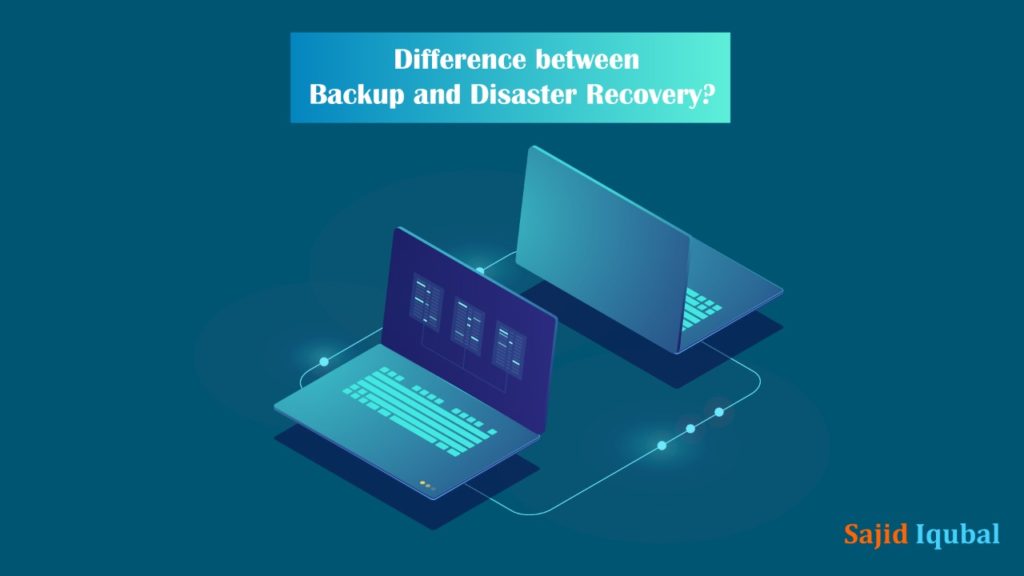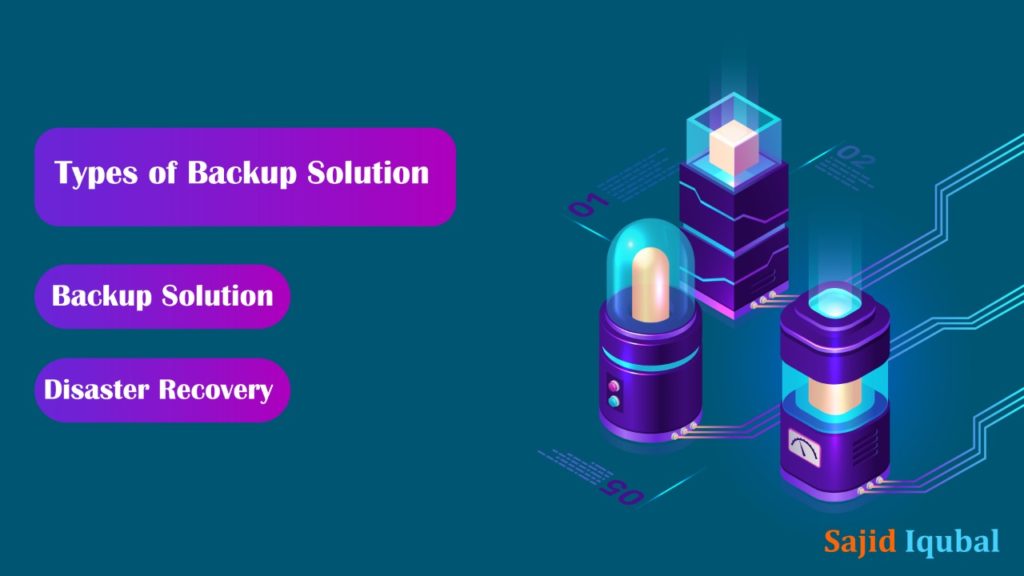Importance of business continuity and disaster recovery plan
For companies today, there is an unprecedented amount of exposure in the industry. It is important to take into account everything from weather-related questions to cyber hacks. Disaster recovery and business continuity strategies offer a vital way to ensure that without the correct resources in place, you don’t rely on your workers to bounce back. During a tragedy, this will eliminate problems with uncertainty as well.
In the aftermath of a tragedy, it also saves you from having to rely on your insurance policy. Know, insurance, such as the loss of clients, won’t cover any effect of a catastrophe. Along with this, about 25% of companies will not be reopened after a catastrophe has emerged. Because of problems that the company was not prepared for, it may trigger a complete shutdown. Business continuity and disaster recovery plan would also guarantee that you have a comparative benefit, as almost half of today’s organizations do not have such a plan in place.
Disaster recovery plan
Recovery for disasters is a component of business continuity planning. Disaster recovery plans include the reconstruction of critical support structures. These systems are all IT properties, hardware, and communications properties. Disaster recovery is aimed at reducing disruption and concentrates on restoring technical operations to usual within a stipulated timeframe.
ELEMENTS OF A DISASTER RECOVERY PLAN
As businesses rely increasingly on systems and digital data for their daily operations, the amount of information and data technology infrastructure lost due to disasters continues to increase. Owing to emergencies, incompetency, and decreased productivity, it is predicted that businesses lose profits and suffer expenditures annually. Measures must be taken to protect the organization from disasters. One way your business can prepare and protect itself from emergencies is to create and implement a disaster recovery plan (DRP). Organizations should form a risk management plan to manage any type of disaster. The method must be easy to execute, understand, and adapted to meet the unique needs of the company.

In a disaster recovery plan, common elements included are:
- Develop a disaster recovery unit – Designing, implementing, and maintaining the Disaster Recovery Plan would be the purpose of the group. A Disaster recovery plan must identify the team members, define each person’s positions, and also include their login credentials.
The Disaster recovery plan also should determine who must be notified in the case of an emergency or disaster. All employees must be able to fully understand the Disaster recovery plan and their responsibility when a tragedy occurs.
- Identify and evaluate risks from disasters.
The disaster management group must identify and evaluate the risks to the company. It step should involve items associated with natural disasters, man-made crises, and technology-related incidents. This will direct the group to assess the recovery plans and assets required to recover from disasters within a defined and suitable timeline.
- Evaluate important uses, documents, and characteristics. The company must evaluate its business processes and determine which are important to the activities of the organization.
The plan should concentrate on short-term sustainability, such as generating working capital and sales, instead of a long-term approach to regaining the organization’s full operational potential.
Nevertheless, the firm must recognize that there are several processes that must not be delayed if necessary. One instance of a critical method is payroll processing.
- Stipulate the recovery and off-site storage processes.
These parameters must specify what to substantiate, by whom, how to execute the backup, the backup position, and how frequently there should be backups. Sponsorship should be given for all necessary software, devices, and documents. Recent annual statements, an existing list of workers and their personal information, tax returns, listings of buyers and sellers, and standard review are records that companies must perceive encrypting. Essential resources required for routine operations, including inspections and sales orders, and also a copy of the Disaster recovery plan, should be stored at an off-site location.
- Check the DRP and manage it. Disaster recovery planning is an evolving process, as disaster threats and emergencies are constantly evolving. It is suggested that the DRP be regularly tested by the company to assess the protocols reported in the reliability and suitability plan. In order to accommodate changes in business processes, technologies, and emerging disaster threats, the recovery team should periodically update the DRP.
In brief, a business must develop a recovery team to create a disaster recovery plan that includes identifying and evaluating disaster risks, highlighting important implementations, and illustrating recovery system. Such procedures may be included in the plan, depending on the organization.

The recovery team and organization would then implement and reply back mostly on plan’s protocols with the Disaster Recovery Plan. The disaster recovery plan should be regularly checked and managed to continually prepare the organization for developing emergencies and disasters.
What does a business continuity plan include?
A business continuity plan would usually have three key components. Resilience, regeneration, and a certain degree of contingency are these.
Parts of the organization may usually be planned with a catastrophe in mind to ensure dependence is achieved. This can include everything from sustaining an increased level of competence than is required for the rotation of workers, as well as critical resources that may be off-site.
In order to ensure that various systems and services resume functionality, the recovery process will be critical. As such, recovery from disasters is commonly part of a business continuity strategy. But, to ensure that you grasp the main points, it is worth discussing this idea individually. Recovery can be more than just technology processes and can include the use of different spaces that have been adapted for the company’s critical functions.
A contingency plan can provide a complete chain of command that is used within an organization to distribute new responsibilities.
3 factors a business continuity strategy should address
All variables which are involved in normal business operations must be included in BC preparation. The following three main factors must be accounted for in your response strategy:
- Communication is the key
Communication with the managers, users, and investors is crucial when a crisis happens. In ensuring active, relevant, and accurate contact between the company and employees, Human Resources (HR) plays a key role.
Social networking is a critical tool for external communications to provide external stakeholders and consumers with regular updates. When an event happens, first for acknowledgment and notifications, many people turn to social media.
- Response by Workforce
The response of the workforce is equally critical in the event of a crisis. Your employees should know about whom to approach, especially what to avoid doing, and what is expected from them. Keeping your workers aware and updated on these topics is your responsibility. It is important for workers to be active in the BC plan as industries expand and threats develop. Keep them posted about the case, the BC strategy of your company, and any changes in the policies of BC.
- Recovery of IT Infrastructures
IT infrastructure recovery also requires BC planning: How can you get your IT services back up after a disaster? It’s here that DR comes into action. The recovery plan usually includes the BC and IT teams working together.
What are the top mistakes that companies make in disaster recovery?
The following pitfalls have been noticed in many companies:
- Insufficient planning: Have you recognized all the vital structures and have comprehensive plans for their recovery to date? Everyone assumes they know what they’re running on their networks, but most people just don’t know how many servers they’re running, or how they’re configured, or what apps they’re running, what programs they’re running, what operating systems or software applications they’re utilizing. Asset management systems appear to be doing the best here, but they often fail to collect crucial information about program updates, and so on.
- Failure to involve the organization in the training and testing of the recovery efforts.
- Failure to receive approval from managers at the senior level. Here, the main concerns are:
- Failure to show the amount of commitment necessary for complete recovery.
- Not doing an overview of the market effect and resolving all holes in the recovery model.
- By building plans for operating operations to be continued after a disaster, not building sufficient recovery plans that detail the recovery time target, essential systems and applications, important documentation required by the organization, and business operations.
- Not providing enough resources to provide for a baseline of semi-annual research.
Conclusion
Disaster Recovery as a Service (DRaaS) appears in particular for such teams as a cost-effective approach to help the business contingency strategy with elevated IT systems that strengthen business resilience. DRaaS is efficient and inexpensive, helping organizations boost their functionality and promote good readiness for natural catastrophes. The interconnectivity of management of business continuity and disaster recovery strategies lies in the fact that certain elements of the prior are usually assisted by the latter. Therefore, a single BC plan will require a collection of plans for disaster recovery. Its aim is to record all the measures taken after a catastrophic event to protect the IT environment and ensure its rapid recovery.
Choosing a complete, reliable solution is protection for your vital business activities and guarantees no loss of records and data. You will save massive sums of capital expenditure for your facilities as well as the expenses of handling and tracking the setup by opting for a Disaster Recovery Solution.